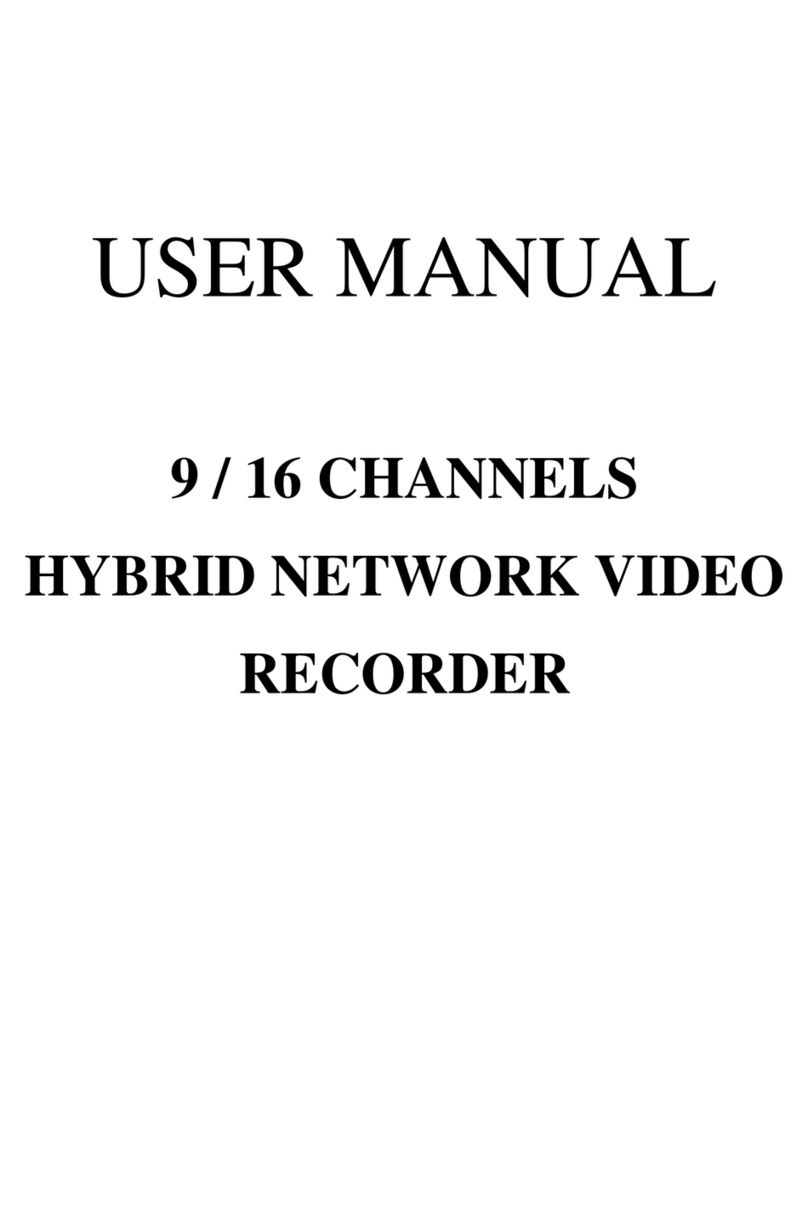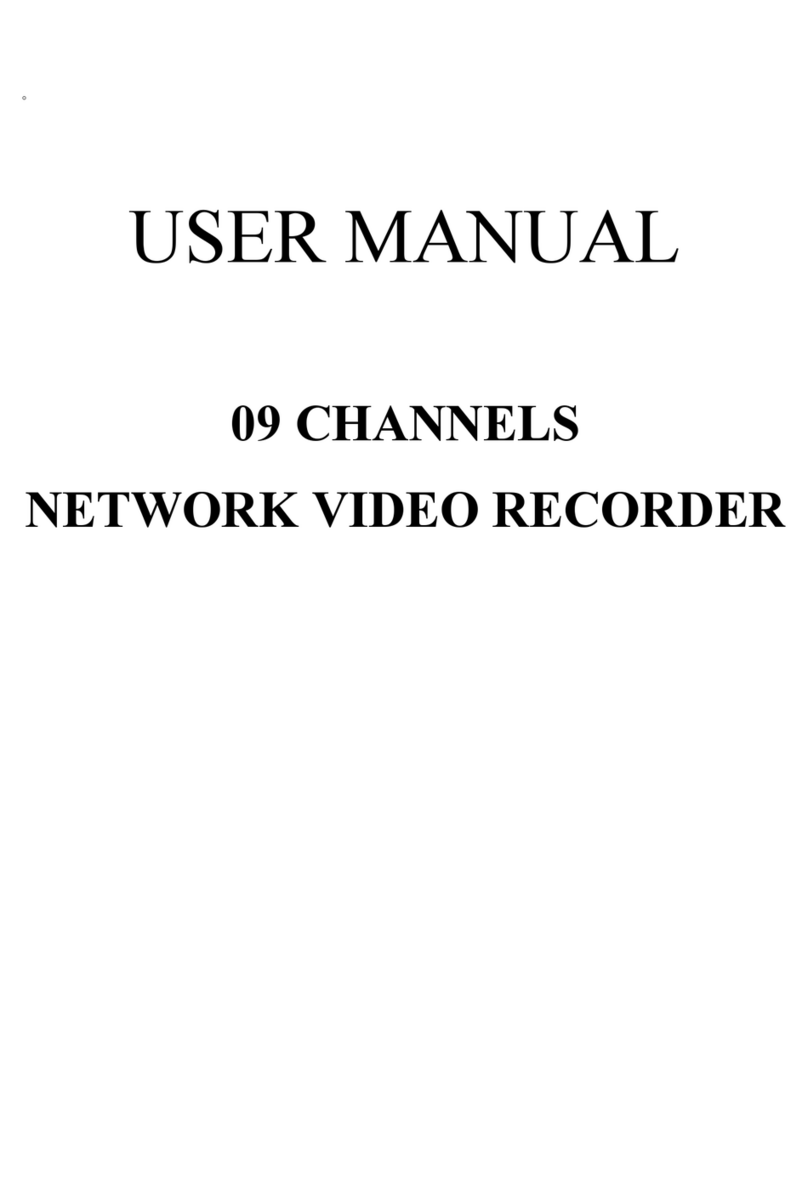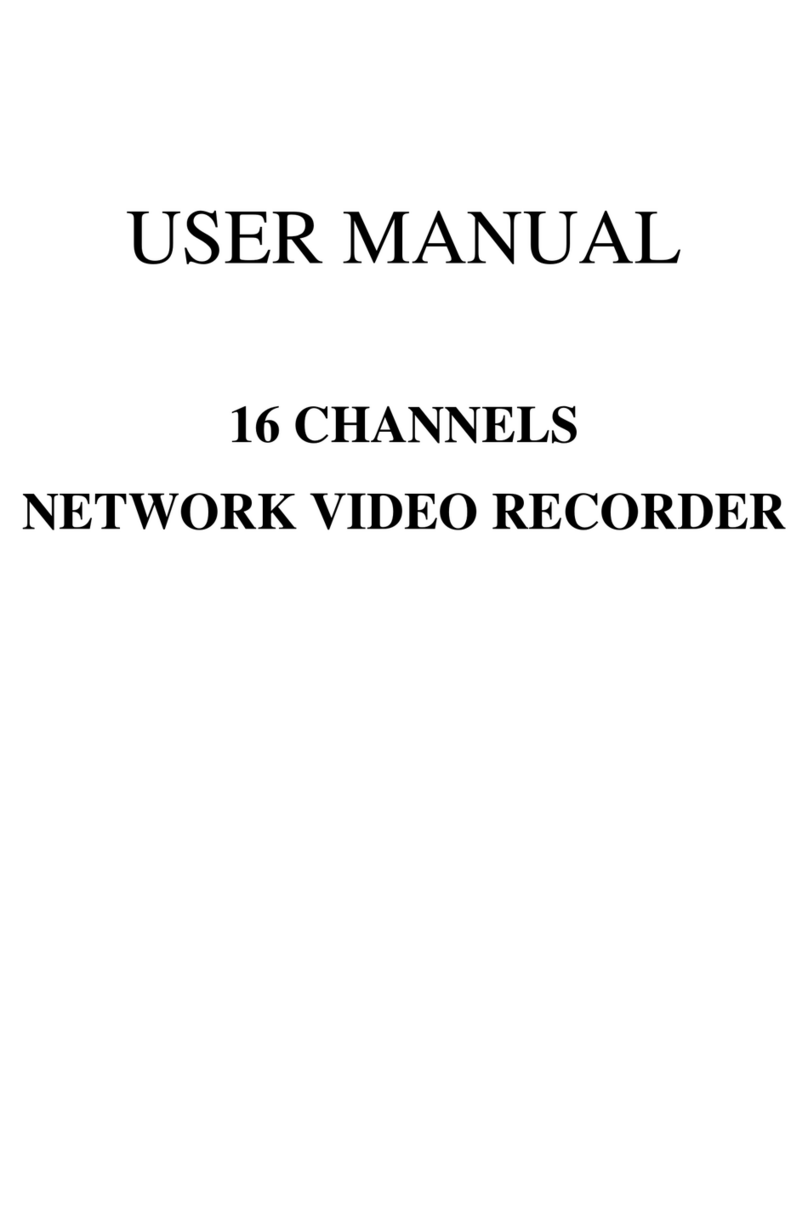TABLE OF CONTENTS
1INTRODUCTION......................................................................................................................4
1.1 FEATURE.......................................................................................................................4
1.2 SPECIFICATION..........................................................................................................4
2HARDWARE OVERVIEW......................................................................................................8
2.1 FRONT PANEL.............................................................................................................8
2.2 BACK PANEL................................................................................................................9
2.3 ALARM TRIGGER.....................................................................................................10
2.4 IR REMOTE CONTROL...........................................................................................12
2.5 PTZ (PAN, TILTAND ZOOM) CAMERA...............................................................13
3SYSTEM SETUP .....................................................................................................................14
3.1 MENU SETUP INTERFACE(GUI)...........................................................................14
3.2 LIVE VIEWING AND POP-UP MENU....................................................................16
3.3 CAMERASETUP........................................................................................................20
3.4 RECORD SETUP ........................................................................................................27
3.5 ALARM SETUP...........................................................................................................29
3.6 NETWORK SETUP ....................................................................................................31
3.7 AUTHORITY SETUP.................................................................................................36
3.8 DISK MANAGEMENT...............................................................................................38
3.9 SYSTEM SETUP .........................................................................................................39
4NVR PLAYBACK....................................................................................................................44
4.1 TIME SEARCH ...........................................................................................................46
4.2 EVENT SEARCH........................................................................................................46
4.3 BACKUP.......................................................................................................................47
4.4 SYSTEM LOG .............................................................................................................48
5BACKUP PLAYBACK ...........................................................................................................49
5.1 MAIN SCREEN SETTING.........................................................................................49
5.2 PLAYBACK OPERATION........................................................................................52
6NETWORK VIEWING & PLAYBACK...............................................................................55
6.1 IP ADDRESS SETUP ON PC SITE...........................................................................55
6.2 OPTIONAL MICROSOFT INTERNET EXPLORER SETUP..............................57
6.3 LOGIN ..........................................................................................................................59
6.4 REMOTE CONTROL.................................................................................................60
6.5 CONFIGURE...............................................................................................................65
APPENDIXA: RECORDING TIME LAPSE (HOURS).............................................................77
APPENDIX B: HDD COMPATIBLE TABLE..............................................................................78
APPENDIX C: ERROR MESSAGE LIST....................................................................................80






























